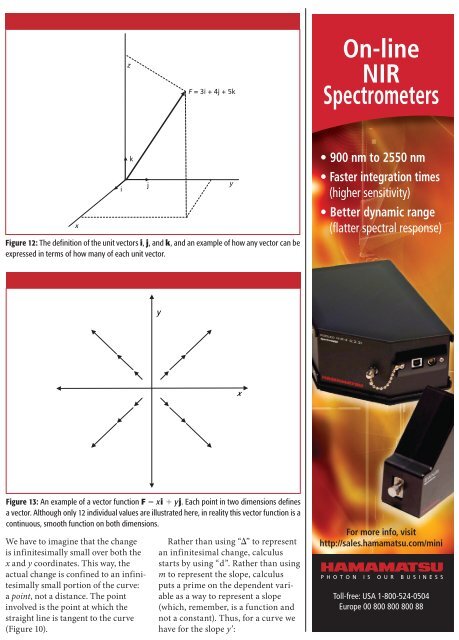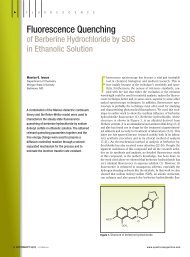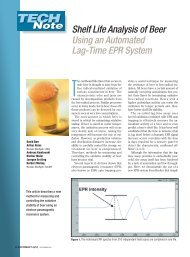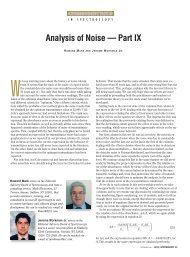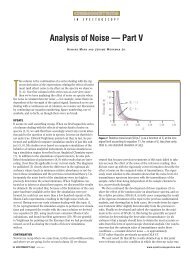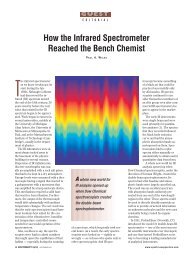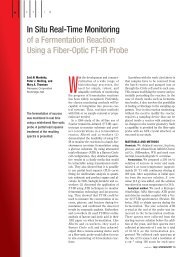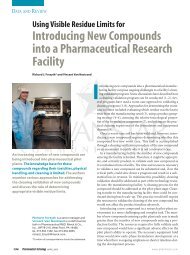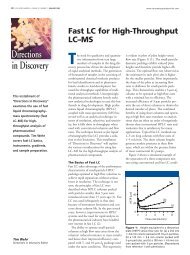Experimental - Spectroscopy
Experimental - Spectroscopy
Experimental - Spectroscopy
Create successful ePaper yourself
Turn your PDF publications into a flip-book with our unique Google optimized e-Paper software.
www.spectroscopyonline.com June 2011 <strong>Spectroscopy</strong> 26(6) 19<br />
z<br />
F = 3i + 4j + 5k<br />
On-line<br />
NIR<br />
Spectrometers<br />
x<br />
i<br />
k<br />
j<br />
Figure 12: The definition of the unit vectors i, j, and k, and an example of how any vector can be<br />
expressed in terms of how many of each unit vector.<br />
y<br />
• 900 nm to 2550 nm<br />
• Faster integration times<br />
(higher sensitivity)<br />
• Better dynamic range<br />
(flatter spectral response)<br />
y<br />
x<br />
Figure 13: An example of a vector function F = xi + yj. Each point in two dimensions defines<br />
a vector. Although only 12 individual values are illustrated here, in reality this vector function is a<br />
continuous, smooth function on both dimensions.<br />
We have to imagine that the change<br />
is infinitesimally small over both the<br />
x and y coordinates. This way, the<br />
actual change is confined to an infinitesimally<br />
small portion of the curve:<br />
a point, not a distance. The point<br />
involved is the point at which the<br />
straight line is tangent to the curve<br />
(Figure 10).<br />
Rather than using “Δ” to represent<br />
an infinitesimal change, calculus<br />
starts by using “d”. Rather than using<br />
m to represent the slope, calculus<br />
puts a prime on the dependent variable<br />
as a way to represent a slope<br />
(which, remember, is a function and<br />
not a constant). Thus, for a curve we<br />
have for the slope y′:<br />
For more info, visit<br />
http://sales.hamamatsu.com/mini<br />
Toll-free: USA 1-800-524-0504<br />
Europe 00 800 800 800 88


